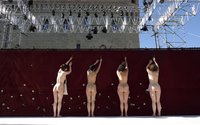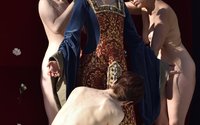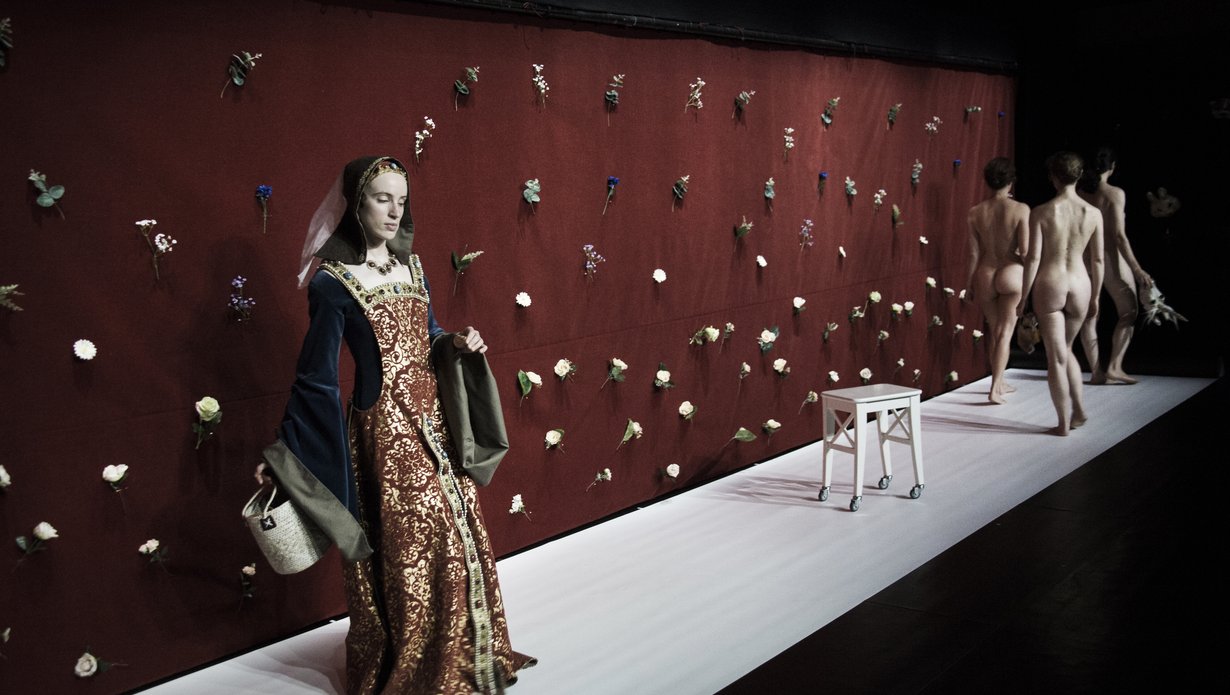Schedule
| Tuesday 9 July |
| 23:15 - 00:00: La Châtelaine |
| Wednesday 10 July |
| 18:15 - 19:00 / 23:15 - 00:00: La Châtelaine |
Gaëlle Bourges (FR)
That image looks very familiar to you. You know you’ve seen her somewhere, that young woman with porcelain skin and ornate attire. Here’s a hint: there is an elegant white unicorn by her side in each of the six tapestries she is in. A masterpiece featured in Paris’ Musée de Cluny, “La Dame à La Licorne” (The Lady and the Unicorn) is the thread that runs along the choreographic score woven by Gaëlle Bouges. The performance borrowed the enigmatic and evocative title of the sixth tapestry, “À mon seul désir” (To My Sole Desire). Over the years, this 15th century treasure elicited many an interpretation, yet the questions still remain: what is this pleasure that ignites La Dame à La Licorne? Is it carnal, or is it spiritual?
A unicorn symbolized chastity in medieval lore, since only pure young girls can approach them. Interestingly, the creature’s predominant single horn can also have a phallic connotation. The unicorn thus denotes two different concepts: virginity and eroticism. This ambivalence inspired the French choreographer to examine the female purity culture in the West. Representations of virgins – the most iconic being Mother Mary – adorned European iconography for centuries. Why has the notion of female virginity been scrutinized and disseminated with such fervor, and why hasn’t its male equivalent received the same amount of attention?
Her status now elevated to symbol of female desire, the elegant Lady is embodied by four dancers exuding their femininity and their nudity. The Lady’s bestiary accompanies her on this journey. Six scenes unravel an allegory of the five senses, as depicted on the first five tapestries. Shrouded in mystery, the final scene unveils the sixth sense. It starts with a young woman facing a jewelry box. Is she about to adorn herself in finery, or is she undressing and putting away her jewels? The dancers suddenly burst into the stage in a lively farandole, and with them come a swarm of rabbits (a symbol of lust), foxes, lions, monkeys… Don’t be surprised if the bodies may seem familiar to you, since this bestiary is composed of volunteers recruited by Festival de la Cité.
Gaëlle Bourges’ piece Lascaux was featured in the 2016 edition of the Festival. With “A mon seul désir,” she continues her exploration of the spaces between performance art, visual art and historical representation in Fine Arts. The result, according to the press, is a stunning and unusual piece.
Galerie
 Gaëlle Bourges - Gennaro Scotti
Gaëlle Bourges - Gennaro Scotti Gaëlle Bourges - Lucas Fierro
Gaëlle Bourges - Lucas Fierro Gaëlle Bourges - Gennaro Scotti
Gaëlle Bourges - Gennaro Scotti
